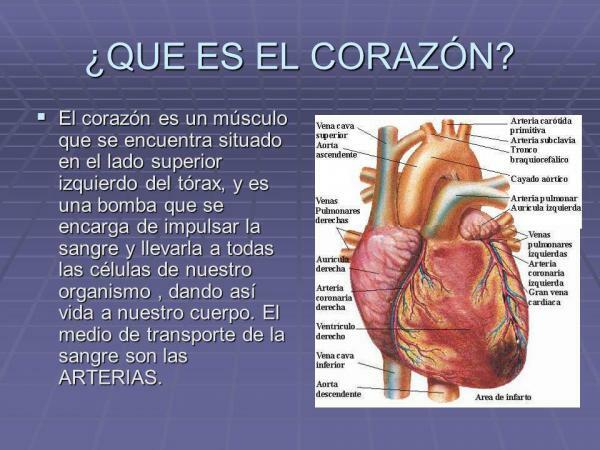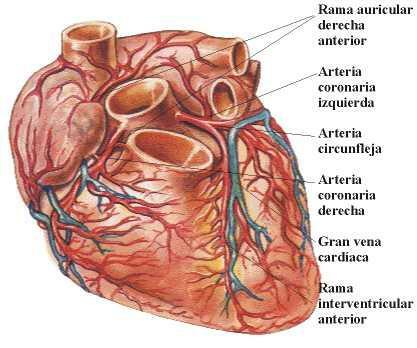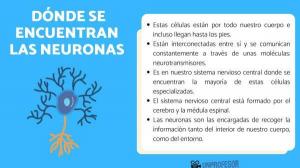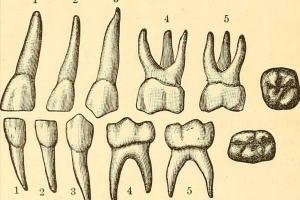Parts of the heart and their functions

Image: Paxala.com
There are a number of organs in the human body without which we could not live and, without a doubt, one of these organs is the heart. The heart performs many of the essential functions for the maintenance of life, being for many people the most important organ of the human being. To understand the heart in depth today in this lesson from a TEACHER we are going to talk about the parts of the heart and their functions.
The heart is the main organ of the circulatory system of human beings. It works as a kind of pump, pushing the blood through the arteries throughout the body. Our heart is the size of an adult fist, depending on the size of the gender, with men being larger than women.
The pumping of the heart is very important, since thanks to it the nutrients and oxygen achieved thanks to digestion and respiration reach other organs of our body, helping the different systems of the body to work together for the maintenance of life.
The heart seems like a simple organ with a simple function, but the reality is that it is
one of the most complex organs and essential of our body. Its heartbeat supposes the coordinated movement of the heart muscle and if it stops doing its functions it entails immediate death, unless artificial organs that perform the same function are used.Here you discover the internal organs of the human body.

Image: Slideplayer
To understand the great importance of this organ, we must talk about the parts of the heart and their functions, in order to understand all the actions that it performs in our body and without which we would not function at all well. The parts that we can find in the heart are in general the following:
- Left atrium: It is one of the four main chambers of the heart, where blood is pumped. The atrium receives blood and sends it to the left ventricle. It is characterized by being the one who receives oxygen-filled blood from the lungs.
- Right atrium: It is another of the four main chambers of the heart. It receives deoxygenated blood and sends it to the right ventricle.
- Left ventricle: The third of the four cavities. It receives the oxygen-filled blood from the left atrium and sends it to the rest of the body.
- Right ventricle: The last of the four main chambers of the heart. It receives the deoxygenated blood from the right atrium and sends it to the lungs, where the blood is refilled with oxygen.
- Mitral valve: It separates and communicates the left atrium with the left ventricle.
- Aortic sigmoid valve: It separates the left ventricle and the aorta, allowing oxygen-filled blood to reach the rest of the body through the artery.
- Tricuspid valve: It separates and communicates the right atrium with the right ventricle. It also prevents blood from flowing back once closed.
- Pulmonary sigmoid valve: It separates the right ventricle from the pulmonary arteries allowing blood to reach the respiratory system.
- Ventricular septum: It is a muscular wall that separates the two ventricles.
- Interatrial septum: It is a muscular wall that separates both atria.
- His fascicle: It allows to carry the electrical impulses to the whole heart.
- Nodule sinus: It allows the heart to beat through electrical impulses. It is one of the least known and most important parts of the heart.
- Atrioventricular node: It allows the heartbeat. It is in charge of driving and coordinating the impulse that begins in the sinus node. Thanks to this, the ventricles do not contract before the blood coming from the atria passes to them.

Image: Lifeder
Although the arteries and veins are not really parts of the heart, it is important to know them since they are the body's direct contacts with the heart. We can differentiate three types of veins and two types of arteries, which are the following:
- Superior Vena Cava: They introduce oxygen-depleted blood into the heart after traveling throughout the body. The superior cava carries blood from the upper body.
- Inferior vena cava: They perform the same functions as the higher ones, but carry blood from the lower part of the body.
- Pulmonary veins: They carry oxygen-filled blood from the lungs to the heart.
- Aorta artery: It carries oxygen-filled blood to the rest of the body.
- Pulmonary artery: Brings oxygen-depleted blood to the lungs to be oxygenated.

Image: taringa!



